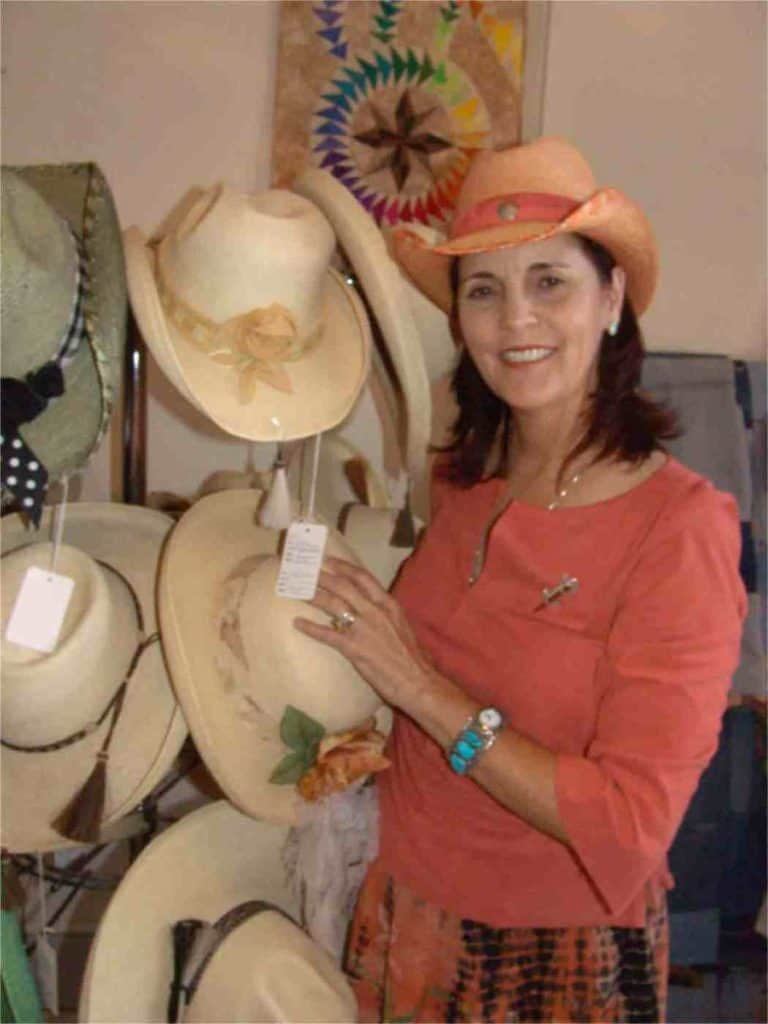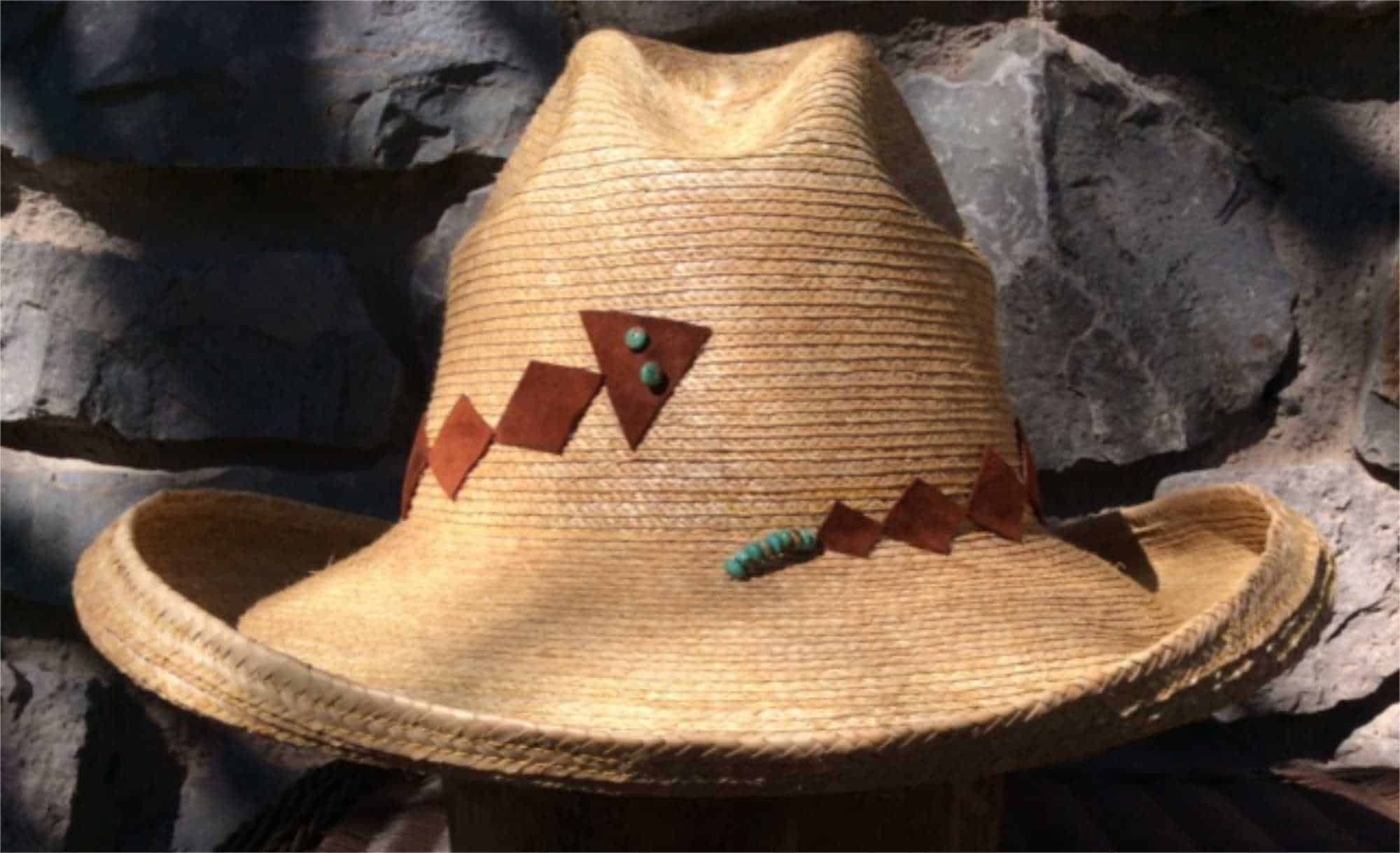Each handmade Buffalo Belle hat provides 98% protection against the strong sunlight of desert southwest.

Hat-maker Janie holds a fine arts degree from the University of Arizona. She has lived on ranches all her adult life until her husband’s retirement as manager of the Ladder Ranch. This experience has given her a personal view into the lives of cowboys and their western wear traditions. She hand makes her hats from open crown, fine palm straw, and gives them a custom look using vintage creases and pencil rolled brims, for men, women and children.
Janie says, “If you’re wearing a Buffalo Belle Hat you’re not going to look like the rows and rows of hats in the western wear store.” Janie also takes custom orders for all her hat styles, including six cowboy hat styes, fedoras, and made-to-order, such as wedding hats.
Where/How to Buy
Buffalo Belle hats can be found at special events in Hillsboro, or in the lobby shop at Ted Turner’s Sierra Grande in Truth or Consequences. Look for the mirror in the hall next to the hat rack. If you find a hat that is a size too big, spacers are provided to place between the inner band and the hat, located hanging from the hat tree.
About Buffalo Belles Hats
Each hat is 98% protective against the harsh sunlight of the dry, high desert air. The inner hatband is made of cushioned fabric which is more comfortable and does not induce profuse perspiration as compared to imitation leather inner bands. Each cowboy hat style is hand-shaped with a vintage style crease and rolled brim. Custom orders are taken. Each hat has either a “jingle-bob” or a “shoofly” on the rear brim. These are terms used by cowboys to refer to — in the case of the jingle-bob — the metal piece hung against the spur rowel that jingles when the cowboy walks. The shoofly is a horse hair tassel used as a decorative piece on a horse’s bridle or attached to the saddle cinch, under the horse’s belly, to keep flies away.

